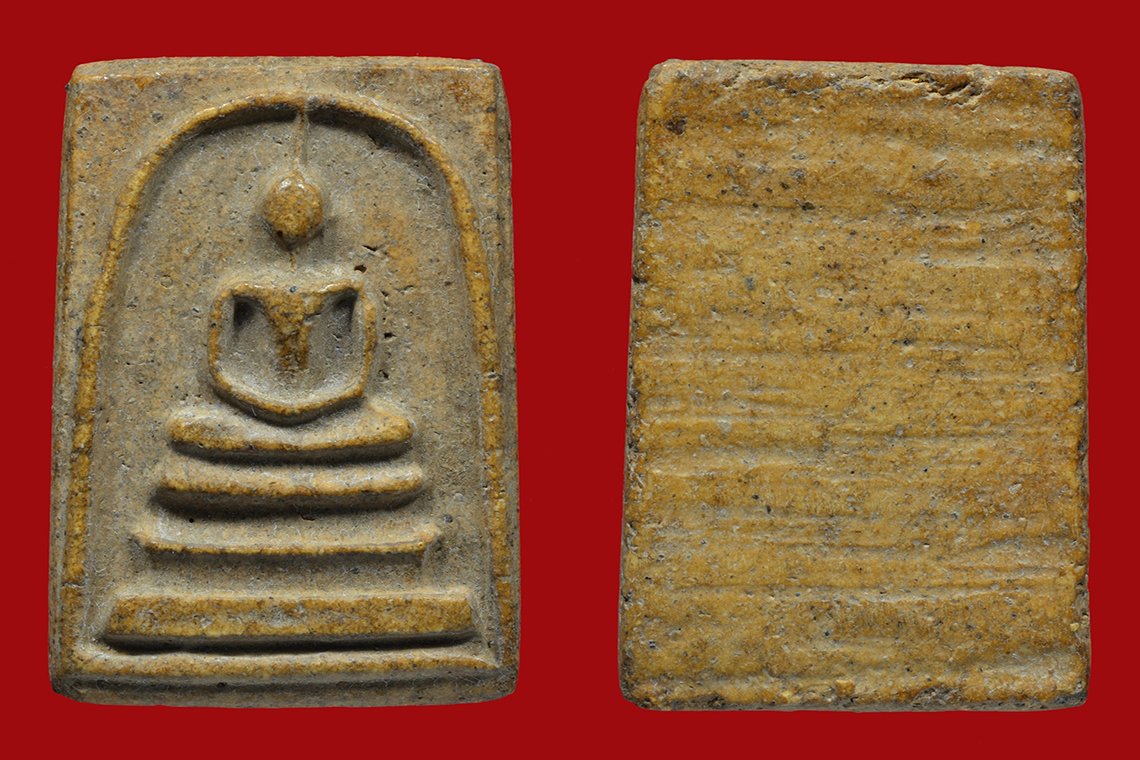
Verification Technique of Somdej Wat Rakhang for creation in middle - late of Somdej Toh's age
(B.E.2394 -2415)
The important elements must be considered to verify Phra Somdej Wat Rakhang in 4 steps as follows:
1. Mould and shape
2. The oldness of texture and mixtures compound.
3. Mass and trace
4. Stain driven off form cement agent
STEP 1 : Check Mould and shape
Phra Somde Wat Rakhang, mould and texture are paired. If texture is correct, mould will be correct. There are 3 major types of mould block as follows
1. Big Mould - Block A (Large)
2. Big Mould - Block B (Middle)
3. Big Mould - Block C (Small)
The characteristic of mould are high-relief convex shape with sharpness, clearness, deepness and proportional functions. The moulds were created elaborately with beautiful arts by royal craftman. The line control frame was natural and harmonize with edge beside and bending arch. These are the unique for each type of mould.
STEP 2 : Check oldness of texture and mixtures compound
The age of Phra Somdej at least 145 years would have important indicatiors that were oldness appearently in every piece.
1. Growth of calcite by crystalization of calcium cabonate(CaCo3) due to major ingredient in Phra Somdej Wat Rakang was shell lime / burnt shell lime (see white film on surface).
2. Natural shrinkage caused
* Wrinkle / Crease
* Crack
3. Driven off cement agent such Tung oil, honey, molasses in brown / yellow stain clearly seen on surface
4. Main ingredients were burnt shell lime mixed with ripe banana, cooked rice and passed the natural of physical process such as aging, drying, weather condition for long time over 145 years, this made amulet looking old pale skin but shiny, harden but soft and fine texture.
5. There were brown, black, red spot, white relics grains, holy powders from various ingredients scattered all over.
STEP 3 : Check Mixtures and traces
1. Dried 108 type of the pollen flowers / assorted flowers from shrine.
2. 5 Holy powders (Ititjae, Trinisinghae, Pattamang, Maharaj, Putthakhun) in white tiny rounded shape grains which shrinked in small holes.
3. White / white yellow stone of Buddha relics.
4. Red spots from broken Soomkor amulet, grind red mineral from Kampangpetch.
5. Black spots from ground burnt incense stick.
6. Small pieces of monk robe in yellow.
7. Silver sand - Gold sand mineral.
8. Crack line at edge of amulet.
9. Natural crack in various styles.
10. Old lacquer peeling off by aging process.
11. Fingerprint (in some pieces).
12. Red stain from liquid of betel chewed.
13. Various traces at backside occured when removing amulet from mould.
14. Small piece of auspicious wood.
15. Blue, red, pink, black from various kind of mineral stone.
STEP 4 : Check Stain Driven off From Cement Agents
1. Stain in red, brown, dark yellow, dark brown from Tung oil.
2. Stain in light-dark brown from honey.
3. Stain in cloudy white from sugarcane juice.